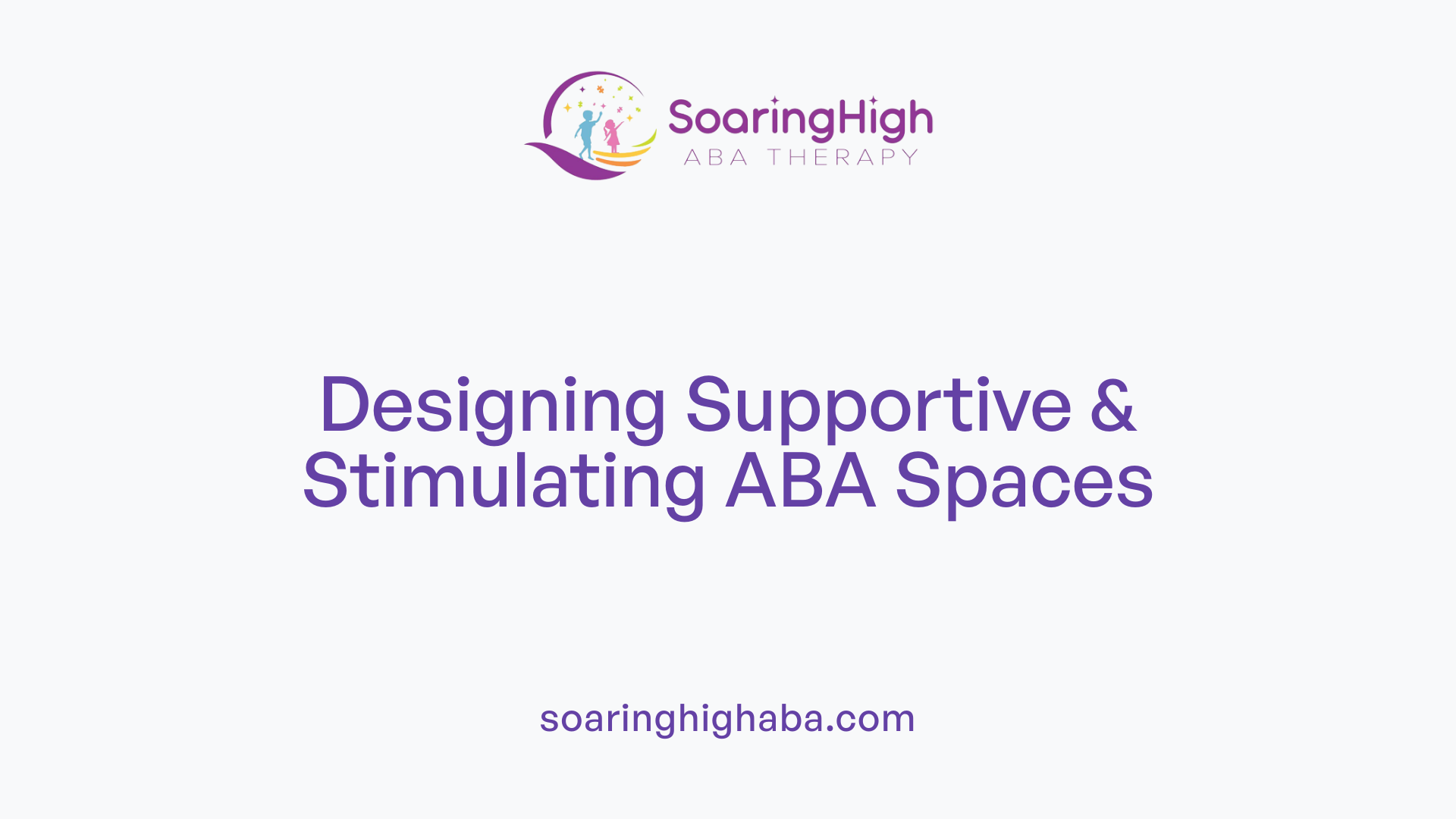Understanding How ABA Encourages Active Participation
ABA therapy is a highly effective approach for promoting positive engagement among children with developmental challenges. By utilizing tailored strategies such as reinforcement, visual supports, and play-based activities, ABA creates an environment where children feel motivated, supported, and eager to learn. This article explores how ABA therapy facilitates active involvement, the techniques it employs, and the benefits it offers, ensuring children can develop essential social, communication, and functional skills within a positive and engaging setting.
Core Methods and Principles that Enhance Engagement

What methods and principles of ABA therapy are used to enhance engagement?
Applied Behavior Analysis (ABA) therapy utilizes a variety of effective methods to keep children actively involved and motivated during sessions. One fundamental approach is positive reinforcement, where children receive pleasant rewards like stickers, praise, or preferred items immediately after displaying desired behaviors. This encourages them to repeat those behaviors.
Task analysis breaking down complex skills into smaller, manageable steps is another key strategy. By teaching each step separately, children experience success more often, which boosts their confidence and interest in learning.
Discrete Trial Training (DTT) is a structured teaching method that involves clear, repeated attempts to teach specific skills. Each trial begins with a clear instruction, followed by a prompt if needed, and ends with reinforcement for correct responses. This method allows for precise tracking of progress.
Natural Environment Teaching (NET) seamlessly integrates skill-building into everyday routines and play activities. By teaching during natural interactions—like playing or mealtime—children learn in contexts they find engaging and relevant, promoting better generalization of skills.
Functional Communication Training (FCT) addresses communication challenges by teaching children alternative ways to express their needs and feelings. This can include using picture exchange communication systems (PECS), gestures, or simple words, reducing frustration and increasing participation.
To ensure these methods are effective, therapists conduct individualized assessments and constantly monitor progress. Data collection helps to make data-driven adjustments, ensuring that interventions remain tailored to each child's evolving needs.
Collectively, these techniques—when applied thoughtfully—create a positive and engaging environment that fosters learning, social interaction, and independence.
Creating a Stimulating and Supportive Environment
 Establishing an engaging and supportive atmosphere during ABA therapy is vital for maximizing learning and participation. Visual supports and schedules are fundamental tools in providing structure, predictability, and clarity. These visual aids, which can include pictorial schedules, picture exchange systems (PECS), and visual cues, help children understand what to expect during sessions, reducing anxiety and increasing cooperation.
Establishing an engaging and supportive atmosphere during ABA therapy is vital for maximizing learning and participation. Visual supports and schedules are fundamental tools in providing structure, predictability, and clarity. These visual aids, which can include pictorial schedules, picture exchange systems (PECS), and visual cues, help children understand what to expect during sessions, reducing anxiety and increasing cooperation.
Designing calming and inviting therapy spaces also plays a crucial role. Such environments use elements like natural light, soft textures, and comfortable furniture to promote a sense of safety. Incorporating sensory items, such as soft blankets or sensory bins, alongside visual supports, further enhances comfort and focus.
Utilizing sensory and visual aids, including educational apps, visual timers, and sensory tools, helps motivate children and sustain their attention. Reinforcement systems—like stickers, favorite snacks, or praise—are tailored to each child's preferences and are employed to encourage positive behaviors and skill repetition.
Creating positive learning settings involves planning the environment to be inviting, with elements that cater to each child's unique needs. This includes establishing designated calm-down areas, clear visual routines, and accessible materials that foster independence.
Incorporating play-based activities into therapy sessions greatly contributes to engagement. Play makes learning enjoyable and allows children to practice essential skills such as language, social interactions, and emotional regulation in a naturalistic context. Different types of play, including structured, social, and free play, are integrated to support overall development.
In sum, a well-designed therapy environment that combines visual supports, calming spaces, sensory tools, and engaging play activities creates a foundation for successful ABA therapy sessions. This holistic approach not only enhances motivation but also helps children develop new skills within a safe, predictable, and stimulating setting.
Making Therapy Fun and Meaningful Through Play

How does ABA therapy promote positive engagement during sessions?
ABA therapy encourages active participation by integrating play into its strategies. It uses reinforcement, modeling, and structured activities tailored to each child's interests and needs. Visual supports, predictable routines, and engaging activities help children stay focused and motivated.
Breaking down skills into small steps allows children to feel successful, boosting their confidence. Simple environmental adjustments like reducing distractions and using non-verbal cues also improve interactions. When therapy feels like play, children are more eager to participate and learn.
Incorporating play makes learning enjoyable and meaningful, which is essential for sustained engagement. Different play activities, such as storytelling, role-playing, and social games, not only entertain but also promote essential skills like language, social interaction, and problem-solving.
Play-based learning in ABA: How does it enhance engagement?
Play-based learning is a core component of ABA that turns therapy into an enjoyable experience. Using interactive games and fun activities helps children absorb new skills without feeling pressured.
Storytelling and role-playing: How do these promote language development?
Storytelling and role-playing encourage children to use language creatively, practice conversations, and understand social cues. These activities make communication practice natural and engaging.
Turn-taking and social games: Why are they important?
Games that involve taking turns or sharing foster social skills like patience, cooperation, and understanding others’ perspectives.
Problem-solving games: How do they improve cognitive skills?
Puzzles, memory matches, and sequencing games challenge children to think critically, enhancing problem-solving abilities and attention spans.
Play as reinforcement: How does it function?
Using play as a reward motivates children to repeat positive behaviors. For example, earning a favorite game or activity after successfully completing a task encourages ongoing participation.
In summary, integrating various forms of play into ABA therapy not only makes sessions more enjoyable but also promotes essential developmental skills, helping children stay engaged and eager to learn.
Supporting Emotional and Social Growth

How does ABA therapy support emotional recognition and regulation?
ABA therapy utilizes visual tools such as emotion cards and charts to help children identify and label feelings accurately. These visual aids are combined with modeling and explicit teaching, enabling children to understand their own emotions and recognize others' feelings.
To further support emotional skills, therapists often introduce coping strategies and relaxation techniques. These include deep breathing exercises, requesting short breaks, and calming activities, which help children manage their emotional responses effectively. Reinforcement techniques encourage children to use these strategies collectively, promoting emotional regulation.
What happens during ABA therapy sessions to support positive involvement?
Throughout therapy sessions, therapists design engaging activities that blend structured activities with play-based learning. Role-playing, storytelling, and matching games are common methods to teach social and communication skills in an enjoyable way. Sensory exploration and puzzles help improve focus and problem-solving abilities.
Visual supports, songs, and reading stories are integrated to enhance language comprehension and emotional understanding. Reinforcers like praise, stickers, or preferred activities motivate children and reinforce positive actions. Building trust and rapport through warm greetings and preferred activities at the start of sessions fosters a positive environment.
Consistency and individualized strategies are vital. Parental involvement ensures reinforcement at home, helping skills transfer to everyday settings. By combining these approaches, ABA therapy creates a supportive space where children actively participate, develop social-emotional skills, and achieve meaningful progress.
How does ABA therapy address challenging behaviors?
Challenging behaviors are addressed systematically through Functional Behavior Assessments (FBA). These assessments identify triggers and underlying reasons for behaviors. Once understood, therapists teach children appropriate communication methods and coping techniques, such as requesting a break or using calming strategies.
Behavior management incorporates positive reinforcement to encourage desirable behaviors and alternative actions. Techniques like planned breaks and rewarding efforts help reduce problematic behaviors, fostering a safer and more productive therapy environment.
How are social skills built within sessions?
ABA therapy emphasizes practicing social skills through role-playing, turn-taking activities, and group interactions. These methods teach children to share, cooperate, and interpret social cues. Situations are simulated in controlled settings, allowing children to learn and practice skills with immediate feedback and reinforcement.
Therapists also train children to read social signals and initiate interactions confidently. Reinforcement of successful social exchanges supports continued development.
How important is family involvement and routine integration?
Family participation is critical for sustained progress. Parents and caregivers are trained in ABA principles and strategies, enabling them to reinforce skills consistently across daily routines.
Incorporating therapy goals into home and community routines ensures that learning generalizes beyond therapy sessions. Visual schedules, calming areas, and consistent routines help children feel secure and understand what to expect, reducing anxiety and promoting cooperation.
In conclusion, ABA therapy nurtures emotional intelligence, social competence, and behavioral regulation through tailored, engaging activities. A collaborative effort involving family and personalized strategies creates a comprehensive approach that fosters emotional and social growth.
The Holistic Benefits of Positive Engagement in ABA

What benefits are associated with positive engagement facilitated by ABA therapy?
Positive engagement is a fundamental aspect of effective ABA therapy. When children actively participate in therapy sessions that incorporate play, visual supports, and tailored reinforcement, they experience a range of developmental benefits.
One of the primary advantages is the improvement in social skills. Through structured play, turn-taking, and group activities, children learn to share, cooperate, and read social cues. These interactions lay the groundwork for meaningful relationships and community participation.
Enhanced communication is another key benefit. ABA techniques such as visual aids, picture exchange systems (PECS), and modeling help children express their needs and feelings effectively. This increased ability to communicate reduces frustration and misunderstandings, promoting smoother social interactions.
Emotional regulation skills are fostered through sensory tools, calm-down areas, and coping strategies like deep breathing. These skills help children manage anxiety, reduce meltdowns, and develop resilience in challenging situations.
Behavior reduction, especially of challenging behaviors, is achieved by identifying triggers through Functional Behavior Assessments (FBA) and replacing negative actions with positive alternatives. Reinforcement strategies such as praise, preferred activities, and tangible rewards encourage desirable behaviors.
Family and community involvement enhances the effectiveness of ABA. Training parents to reinforce skills at home and integrating ABA principles into daily routines ensure consistency, leading to sustained progress. When children see consistent expectations across settings, their development accelerates.
Finally, ABA therapy promotes independence and adaptive skills. Tasks like self-care, daily routines, and community engagement are broken into manageable steps, with reinforcement supporting mastery. As a result, children build confidence and autonomy.
Overall, active participation driven by engaging, tailored ABA strategies creates a foundation for lasting growth in social, communicative, emotional, and functional areas, significantly improving quality of life for children with diverse needs.
Empowering Children for Lifelong Growth and Connection
ABA therapy's focus on fostering positive engagement is fundamental to its success in developing essential skills and promoting meaningful participation. By creating a stimulating environment, employing tailored techniques, and integrating play, ABA not only reduces challenging behaviors but also builds confidence and social connections. This comprehensive approach supports children in achieving greater independence, building relationships, and reaching their full potential. Ultimately, ABA stands as a powerful tool for empowering children to navigate their worlds with joy, resilience, and competence.
References
- The Ultimate Guide to Creating Fun ABA Therapy Sessions
- The Role of Play in ABA Therapy: Making Therapy Fun
- How ABA Therapy Supports Emotional Regulation in ...
- How ABA Therapy Supports Child Development - Radical Minds
- What to expect in an ABA therapy session
- How ABA, Speech, and Occupational Therapy Work Together
- ABA Techniques: Strategies for Behavior Analysts - GSEP Blog





































































































